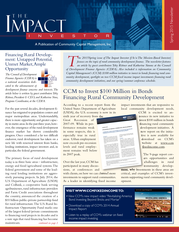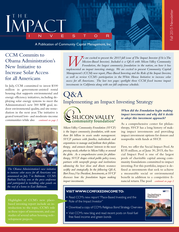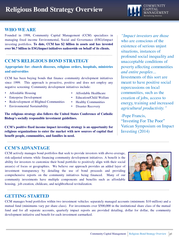Place-Based Investing and the Role of the Impact Investor - September 2015
Community Capital Management, Inc
Description
PLACEBASED INVESTING AND THE ROLE OF THE IMPACT INVESTOR
Conclusion
Perhaps, in the best of all political systems, access to
governmental assistance for such programs as those
that helped ï¬nance the aforementioned properties/initiatives could be found in a single location, and not
require hopscotching from agency to agency in order to
ï¬nd them. Furthermore, perhaps in the best of all economic systems, the idea that social and environmental
mission should align with investment strategy would
be a vision shared by all investors and not just those
who describe themselves as sustainable or impact.
While we may not live in the best of all possible systems, the efforts put forth on behalf of the nation’s
least fortunate citizens are nothing less than Herculean.
What was once crumbling testimony to the failure of
the American dream has been demonstrated to offer a
successful paradigm for true inclusiveness.
Investors who turn to CCM for their impact-based
ï¬nancial activities are part of a rejuvenation of society
through the capital markets.
Investors who turn to CCM for their impact-based
ï¬nancial activities are part of a rejuvenation of
society through the capital markets.
2500 Weston Road, Suite 101 | Weston, FL 33331 | Phone: 954-217-7999 | Fax: 954-385-9299 | www.ccmï¬xedincome.com
For more information, please contact David Sand at dsand@ccmï¬xedincome.com or Jamie Horwitz at jhorwitz@ccmï¬xedincome.com.
11
© 2015 Community Capital Management, Inc.
.









